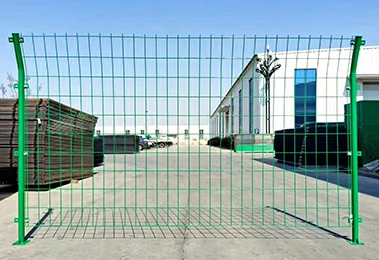 TEL:
+86-13102802206
TEL:
+86-13102802206
 Email:
fencenetting@china.com
Email:
fencenetting@china.com
 Language
Language
 TEL:
+86-13102802206
TEL:
+86-13102802206
 Email:
fencenetting@china.com
Email:
fencenetting@china.com
 Language
Language


The Versatility and Benefits of Strand Wire Fencing
Strand wire fencing, often referred to as barbed wire or simply wire fence, is a type of fencing that utilizes a series of wire strands twisted together, typically with barbs at intervals along the wire. This fencing solution has been widely adopted in various contexts, from agricultural settings to residential properties, due to its efficiency, cost-effectiveness, and durability. Striking a balance between security and visibility, strand wire fencing has proven to be an invaluable resource in agricultural management and property delineation.
Historical Context
The invention of strand wire fencing dates back to the late 19th century, primarily as a solution to the challenges posed by traditional wooden fences. As the American West expanded, farmers and ranchers needed an efficient way to contain livestock and delineate property boundaries without the extensive labor and upkeep required for wooden fences. Barbed wire, with its sharp barbs designed to discourage animals from pushing against or escaping over the fence, quickly became the standard for agricultural fencing.
Construction and Design
Strand wire fencing is typically constructed using galvanized steel wire, which provides excellent resistance to rust and corrosion. The barbs, usually spaced between four to twelve inches apart, can vary in design and size according to the specific needs of the installation. This fencing can be installed in a range of heights and configurations, accommodating various land types and purposes. A single strand may be sufficient for smaller animals, while multiple strands are often employed for larger livestock.
Advantages of Strand Wire Fencing

One of the primary benefits of strand wire fencing is its cost-effectiveness. Compared to wooden or vinyl fencing, wire fencing requires less material and is easier to transport and install. The materials used are generally more affordable, and the maintenance requirements are minimal. A well-constructed wire fence can last for decades, provided it is maintained properly, with occasional inspections to address any damage or wear.
Another significant advantage is the versatility of strand wire fencing. It can be modified easily to suit various needs, whether it is height adjustments, additional strands for greater security, or specific configurations to accommodate challenging terrains. For those managing large tracts of land, wire fencing allows for the efficient containment of livestock, helping to manage grazing fields and reduce overgrazing in critical areas.
Applications
Strand wire fencing is not only beneficial for agricultural use but also finds applications in commercial and residential settings. It is often employed in industrial sites to deter trespassers and protect valuable assets. In residential areas, wire fencing can provide a cost-effective way to delineate property lines without obstructing views.
Moreover, many property owners appreciate the layered approach that strand wire fencing can offer when combined with other types of fencing. For example, chain link or wooden fences can serve as an outer shell, while strand wire can provide an additional, more secure barrier. This combination approach enhances security while maintaining an aesthetic appeal.
Conclusion
In conclusion, strand wire fencing has remained a popular choice for a wide range of applications due to its durability, cost-effectiveness, and adaptability. Whether used in agricultural practices, for security purposes, or to define property lines, it offers a practical solution that stands the test of time. As the demand for effective and low-maintenance fencing solutions continues to grow, strand wire fencing will undoubtedly continue to play a pivotal role in both rural and urban landscapes, proving that sometimes, simple solutions are the most effective.